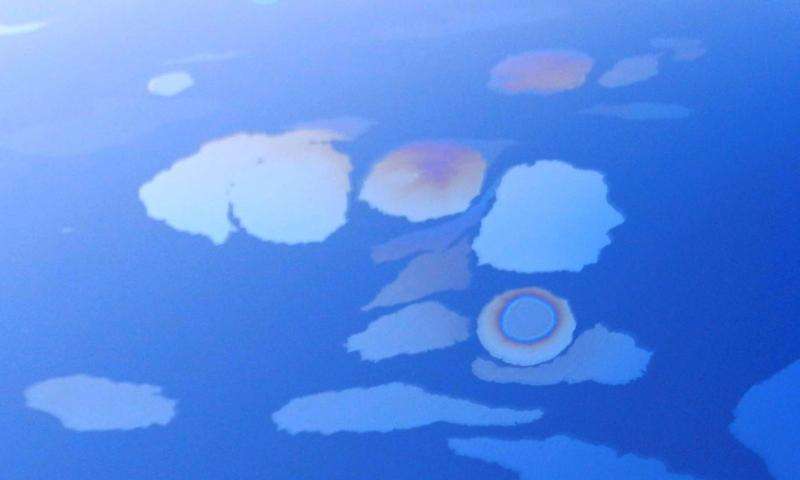Natural hydrocarbon seeps are providing the nutrients for vast microbial communities to thrive in the Gulf of Mexico. Although the oil itself is not particularly beneficial, the nutrients it brings up enable the micro-ecosystem to flourish.

(Photo : Ajit Subramaniam | Columbia University)
Petroleum seeps are quite common in many areas of the world, though many of them have already been exploited completely. In fact, oil seeps have been exploited since ancient times, by both humans and microorganisms. However, marine seeps are relatively understudied, and only in recent years have we become better at detecting them through remote sensing.
Seeps generally flow at a very slow and steady rate; the material that flows is generally toxic, but some organisms that live nearby have adapted to the conditions and even take advantage of them. This seems to be the case with phytoplankton communities gather in areas of the Gulf .
“This is the beginning of evidence that some microbes in the Gulf may be preconditioned to survive with oil, at least at lower concentrations,” oceanographer Ajit Subramaniam from Columbia’s Lamont-Doherty Earth Observatory said.
The theory is that rising oil and gas bubbles are bringing up deep-water nutrients that phytoplankton need to grow. This would explain why the biggest blooms are located above the seeps, but at a distance. The highest phytoplankton concentration was located several hundred feet below the water surface – twice higher than the average.
“In this case, we clearly see these phytoplankton are not negatively affected at low concentrations of oil, and there is an accompanying process that helps them thrive. This does not mean that exposure to oil at all concentrations for prolonged lengths of time is good for phytoplankton.”
Following a series of lab experiments, Subramaniam found that while the organisms can tolerate low quantities of oil in their environment, it does nothing good for them. In this case, it remains to be seen what the long-term impact will be on the plankton.
“The direct effect of oil is usually negative, but in some cases small amounts of oil can be outweighed by the positive effect of the nutrients that are tagging along,” added Andy Juhl, an aquatic ecologist at Lamont and coauthor.
For now, researchers are trying to obtain a broader view of the seeps in the Gulf and how they affect microbial activity. They don’t know what types of plankton thrive under these conditions and what (if any) damage long-term exposure does. This ecosystem consisting both of plankton and oil-degrading bacteria and other microbes is likely very complex and it’s not clear how this influx of nutrients affects its internal balance.
“Satellite radar data have given us a detailed picture of where natural seeps are concentrated across deep seafloor of the Gulf of Mexico,” said co-author Ian MacDonald, an oceanographer and professor at Florida State University. “Building on this, the present, novel results show biological effects near the ocean surface in areas where seeps are most prolific.”
Journal Reference: Elevated surface chlorophyll associated with natural oil seeps in the Gulf of Mexico.






